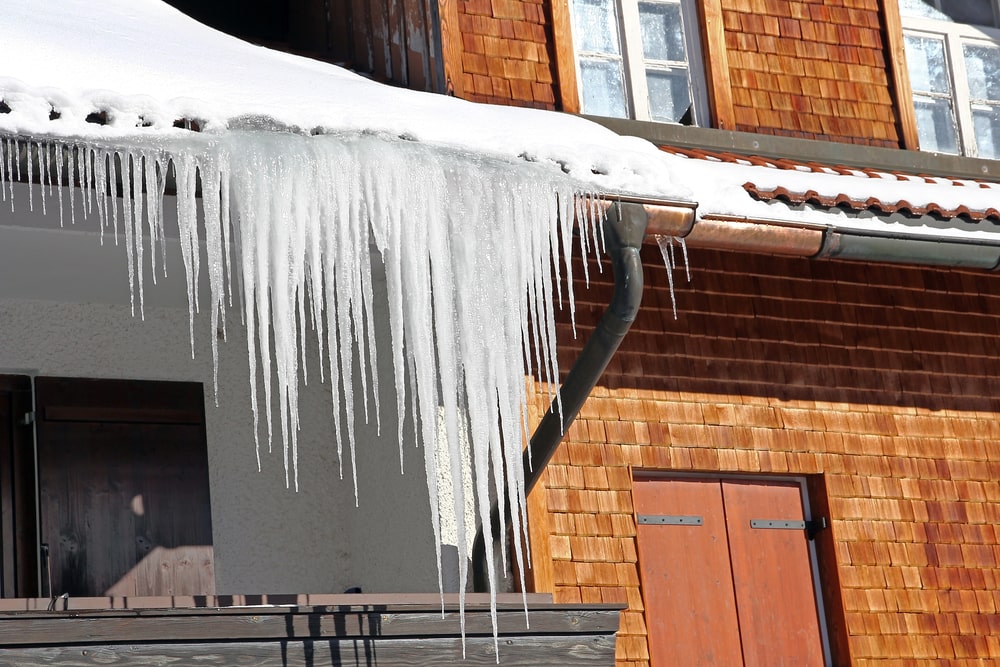
When snow piles up and temperatures swing, a cozy house can create the perfect recipe for roof leaks. Ice dams form when heat escapes, melts roof snow, and refreezes at the eaves. The result is trapped water that backs under shingles. With a little planning tailored to Minneapolis MN, you can keep the roof edge clear, protect your attic, and avoid midwinter emergencies.
Why Ice Dams Happen Here
In Minneapolis MN, long cold snaps are often followed by sunny afternoons. Escaping warmth from recessed lights, bath fans, and attic hatches warms the roof, melts snow, and sends water downhill. The overhang stays cold, so meltwater refreezes into a ridge that traps more water. Add blocked soffit vents or matted insulation and moisture lingers, which raises attic humidity and stains roof sheathing.
Early Warning Signs
Watch for thick icicles at the eaves, damp soffits, and ceiling stains near exterior walls. Rusty nail tips or frost on roof decking inside the attic are red flags in Minneapolis MN. If insulation looks wind-swept or matted, air is moving where it should not. Catching these clues early keeps cleanup simple and prevents drywall damage.
A Step-by-Step Prevention Plan
- Air seal first. Caulk and foam around can lights, top plates, wiring holes, and the attic hatch. Air sealing pays off fastest in Minneapolis MN because it stops the heat that drives melt.
- Right-size insulation. Aim for an even blanket and repair low spots. Fluffy insulation works only after air leaks are sealed.
- Unblock soffits. Install baffles so insulation does not choke intake vents. Balanced intake and exhaust help the roof stay uniformly cold.
- Vent fans outdoors. Bath and kitchen fans must terminate outside, not in the attic.
- Manage snow. Use a roof rake to pull the first 3 to 4 feet of snow off the eaves after storms.
Ventilation and Insulation, Working Together
Good ventilation without air sealing still loses heat. Extra insulation without ventilation can trap moisture. The winning combination for Minneapolis MN is tight ceilings, clear soffits, and a reliable exhaust path through ridge or roof vents. The goal is a cold, dry attic so snow stays frozen and does not turn into meltwater that refreezes at the edge.
Heat Cables and When to Use Them
Heat cables can create melt channels at stubborn eaves, but they are a helper, not a cure. If you install them, use a dedicated circuit, follow the manufacturer layout, and switch them off once the danger passes. In Minneapolis MN they work best after air sealing and ventilation fixes, not before. Otherwise you are paying to mask a problem that will return.
Common Mistakes That Make Dams Worse
- Chipping ice with shovels or axes that tear shingles
- Adding insulation while ignoring ceiling air leaks
- Blowing warm, humid air into the attic from bath fans
- Blocking soffits with new insulation or storage boxes
- Ignoring long downspouts and grading that dump meltwater against the foundation
Quick Winter Checklist
- Rake the lower roof edge after heavy snowfalls
- Run bath fans for twenty minutes after showers
- Keep attic hatch weatherstripped and latched
- Check for frost on sheathing during cold snaps
- Photograph icicles and ceiling stains to track progress in Minneapolis MN
When to Call a Pro
If you see recurring icicles, attic frost, or interior stains, get an attic evaluation before the next storm cycle. A trained crew will air seal, reset insulation, open soffits with baffles, and verify fan terminations. For fast help in Minneapolis MN, we can assess photos, map leaks, and build a prioritized plan that keeps your roof edge clear all winter.
Keep Reading
Summer brings a different challenge below grade. Continue to: Summer Humidity Control Tips for Minneapolis MN Basements and learn how to keep lower levels fresh when temperatures rise.


